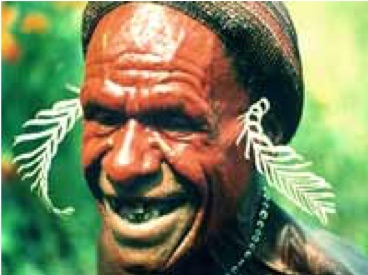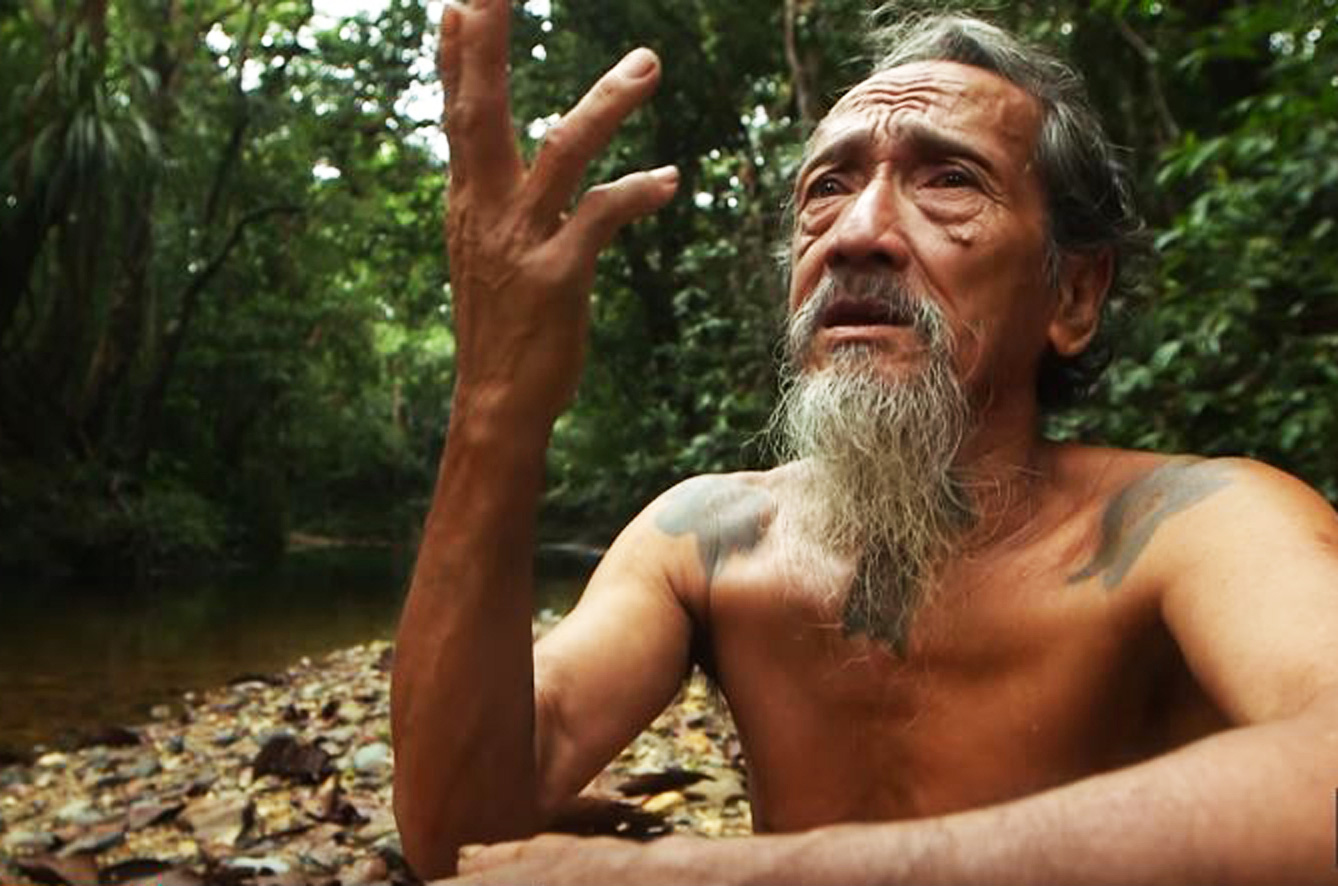Curator
 — David N. M.Mbora, Associate Professor of Biology and Environmental Science, Whittier College
— David N. M.Mbora, Associate Professor of Biology and Environmental Science, Whittier College
Standing on Sacred Ground: Profit and Loss
From the rainforests of Papua New Guinea to Canada’s tar sands, Standing on Sacred Ground: Profit and Loss exposes industrial threats to native peoples’ health, livelihood, and cultural survival.

Curator
David N.M. Mbora, Associate Professor of Biology and Environmental Science, Whittier College
Why I selected this film
I chose this film because it makes an important point about the high cost that native peoples have to pay to provide the industrial raw materials and fossil fuel energy that drive the economies of industrialized countries. The high costs, in the form of lost livelihoods and nasty health effects on the indigenous people, are often invisible to the residents of industrialized countries. In addition, the film highlights important grassroots efforts by the indigenous peoples to hold governments and industry accountable. Such environmental activism, I believe, is important because it empowers local peoples to pursue environmental justice.
Teacher's guide
Please see the teacher's guide for maps, background information and suggested subjects, questions and activities.
Synopsis
From the rainforests of Papua New Guinea to Canada’s tar sands, Profit and Loss exposes the industrial threats to native peoples’ health, livelihoods, and cultural survival. In PNG, a Chinese government–owned nickel mine violently relocated villagers to a taboo sacred mountain, because it makes an important point about the high cost that native peoples have to pay to provide the industrial raw materials and fossil fuel energy that drive the economies of industrialized countries. The built a new pipeline and refinery on contested clan land, and is dumping mining waste into the sea. In Alberta, First Nations people suffer from rare cancers as their traditional hunting grounds are strip-mined to unearth the world’s third-largest oil reserve. Indigenous peoples tell their own stories—and confront us with the ethical consequences of our culture of consumption. —Excerpted from the Standing on Sacred Ground website
The environmental justice focus of the film
This film highlights how environmental contamination can affect people, particularly indigenous communities, who are fighting for clean, healthy, and safe environments for their families and children. While non-Native American residents fled their homes after the attempts to clean up the Tar Creek site failed, members of the Quapaw Tribe who were forcibly relocated to the area in the first place remain, and they continue to be exposed to dangerous pollution from the lead and zinc mines. The film draws attention to the long history of marginalization and willful neglect that Native Americans have experienced at the hands of the U.S. government and corporate extractive industries—abuses that continue today
REVIEWS
"The striking parallels between the Chinese [in] Papua New Guinea and the Canadian...oil sands project are brought out well and poignantly in this film." Marjorie Mandelstam Balzer, Department of Anthropology, Georgetown University
"Professors of ecology, indigenous cultures, and public administration would all find incredible use in Standing on Sacred Ground: Profit and Loss. This educational documentary is a must-have for any classroom teaching environmental justice." J. Zimmerman for Video Librarian 10 April 2013 Four Stars ****
We live in a modern era of land speculation and resource profiteering. Separated by two continents and even more water, two indigenous groups resist the ceaseless expansion of extractive industry within their communities. The arrival of a Chinese mining company and the construction of a sprawling nickel mining and processing facility in Eastern Papua New Guinea creates unrest and endless issues for the natives living there.
Forced to live on the taboo lands of their sacred mountain, the local people face constant disrespect from their government and the Chinese mining company as their graveyards and sacred sites are desecrated without any punishment or admission of fault.
In Canada, first nations people gather to protest the destruction and pollution of their hunting and fishing grounds near Canada’s tar sands. Though some will say the drilling and transport of black gold will bring jobs to the area, science shows that cancer and other health risks await those who eat or drink the contaminated water, fish, and wildlife that accompany oil extraction.
Anyone well-versed in ecological scholarship will know that our society’s constant consumption often means that someone elsewhere pays a price for our relative prosperity. Standing on Sacred Ground: Profit and Loss allows a variety of people involved to speak their minds about the issues of pollution, environmental racism, and the extractive industry’s seemingly endless ability to destroy what is precious and irreplaceable for the sake of short-term profit.
The style of this documentary is dry and journalistic, but the footage and message displayed are valuable for anyone learning about environmental justice and indigenous activism. Standing on Sacred Ground is presented in two nearly 30-minute segments, making this documentary an outstanding choice for educators with short class periods. This documentary makes two excellent cases of why people are so fervent in their pursuit of environmental justice. Highly Recommended.
Where does this title belong on public library shelves?
Standing on Sacred Ground: Profit and Loss would make an outstanding addition to environmental and indigenous rights documentary collections.
What type of college instructors would use this film?
Professors of ecology, indigenous cultures, and public administration would all find incredible use in Standing on Sacred Ground: Profit and Loss. This educational documentary is a must-have for any classroom teaching environmental justice.
How does this film contribute to a discussion of environmental or climate justice, and/or to environmental literacy?
Standing on Sacred Ground does an outstanding job connecting disparate indigenous environmental activism across the globe. Those studying indigenous resistance will be most interested in this title.
Awards
Best Documentary Feature, American Indian Film Festival Wild and Scenic Environmental Film Festival, John DeGraaf Lifetime Environmental Filmmaking Award to Christopher McLeod Mill Valley Film Festival Environmental Film Festival in the Nation’s Capital screening at Smithsonian National Museum of the American Indian Columbus International Film+Video Festival
Citation
Main credits
McLeod, Christopher (film director)
McLeod, Christopher (film producer)
Huang, Jennifer (film producer)
Huang, Jennifer (screenwriter)
Greene, Graham (narrator)
Other credits
Edited by Marta Wohl; director of photography, Andrew Black; composer, Jon Herbst.
Distributor credits
Christopher McLeod and Jennifer Huang
Christopher McLeod
Docuseek subjects
Asian Studies
Anthropology and Archaeology
Politics and Political Science
Geography
North American Studies
Water
Environmental Health
Forests and Rainforests
Sustainability
Americas, The
Agriculture and Food
Mining Sector
Citizenship, Social Movements and Activism
Human Rights
Race and Racism
Forestry
Fishing
Global / International Studies
Globalization
Indigenous Studies
Biodiversity
Conservation and Protection
Environmentalists
Habitat Destruction
Pollution
Toxic Waste
History
Colonialism
Ecology
Family Issues
South Asia
Canada
United States
Habitat Restoration
Environmental Geography
Religion and Spirituality
Distributor subjects
Anthropology
Asian Studies
Capitalism
China
Climate Change
Conflict Resolution
Conservation Biology
Corporate
Social Responsibility
Development
Economics
Ecosystems
Environmental Anthropology
Environmental Education
Environmental Geography
Environmental Justice
Environmental Planning
Environmental Policy
Ethics
Fishing
Food
Forestry
Forests
Global Issues
Grasslands and Prairies
Habitat Loss
Health and Health Care
Human Rights
Law
Indigenous Studies
Internationl Studies
Mining
North American Studies
Papa New Guinea
Pollution
Public Health
Rivers
Sociology
Sustainability
Toxic Chemicals
Toxic Waste
United States
Water
Wetlands
Youth and Family
Keywords
Welcome to Docuseek2!
Docuseek2 is a streaming platform of the best documentary and social issue films available for the higher education community.
Anyone may search for titles and find detailed information about the titles. To preview films or license them for streaming, you must register and login.
Currently, we support online registration for anyone affiliated with a higher education institution. Please inquire if you are with a K-12 district or school or with a public library.
Click the Close button to get started!



